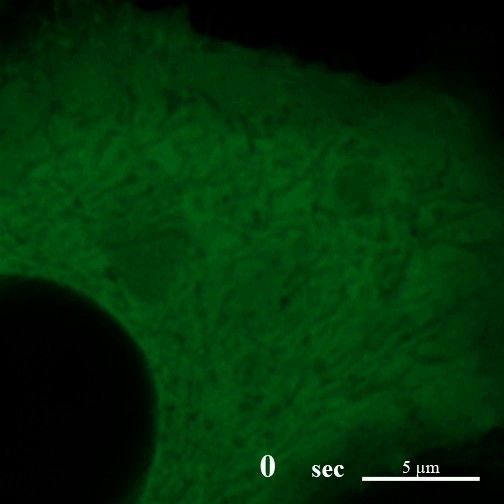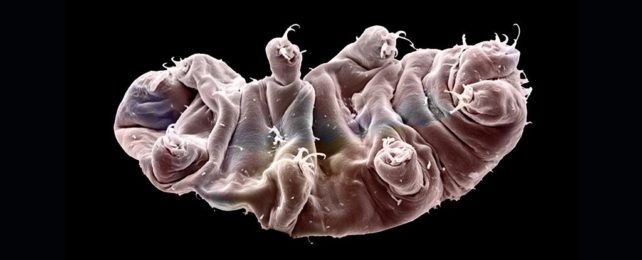Water is a key ingredient to all life on Earth, yet tardigrades with their near immortal-like powers can somehow endure being sapped of almost all their H2O.
Now, researchers have discovered another trick these chubby microscopic anomalies use to survive years of extreme dehydration.
"Although water is essential to all life we know of, some tardigrades can live without it potentially for decades," says University of Tokyo biologist Takekazu Kunieda.
Colloquially known as water bears, many of the 1,300 known species of tardigrade tolerate conditions that would be fatal to all other known life forms.
Starve them, boil them, freeze them, radiate them, or fire them from a gun and these distant velvet worm relatives will just keep coming back for more.
When these aquatic animals find themselves in an environment that leaches away their water, tardigrades shrivel into a round form called a tun.
As Kunieda, fellow University of Tokyo biologist Akihiro Tanaka and colleagues explain in their paper, dehydrated tardigrades are exceptionally stable and can withstand many extremes including exposure to the vacuum of space and still manage to resuscitate themselves.
"It's thought that as water leaves a cell, some kind of protein must help the cell maintain physical strength to avoid collapsing in on itself," says Kunieda.
So, the researchers combed through a group of tardigrades known for their dehydration abilities called eutardigrades for proteins that could explain this phenomenon, finding 336 unique suspects.
"After testing several different kinds, we have found that cytoplasmic-abundant heat soluble (CAHS) proteins, unique to tardigrades, are responsible for protecting their cells against dehydration," Kunieda explains.
Using experiments in human and insect cells, the researchers were able to demonstrate CAHS proteins increase cell stiffness, buttressing the cell against shrinkage caused by lost water pressure. The proteins even protected cells against too much water pressure as well.
"Trying to see how CAHS proteins behaved in insect and human cells presented some interesting challenges," says Tanaka.
"Typical staining method requires solutions containing water, which obviously confounds any experiment where water concentration is a factor one seeks to control for. So we turned to a methanol-based solution to get around this problem."
This allowed them to see CAHS proteins in action within lab-grown cells.

CAHS proteins appear to act as cellular scaffolding structures akin to the cell's own cytoskeleton – but only when cells face the stress of water loss.
As seen in the video above, in dehydrated cells CAHS proteins link together to form spiderwebs of supporting filaments, providing an on-demand transition to this filament-filled, gel-like phase.
The cytoskeleton-like structures protect the cell against being completely distorted by the lack of water pressures and likely contribute to the incredible stability of tuns.
Called anhydrobiosis, this process can be reversed, allowing the tardigrades to pick up their lives where they left off, once more hydrating conditions return.
Scientists have previously suspected that there is a protein-based 'bioglass' that keeps the cellular structures of tardigrades intact during extreme desiccation.
But past studies have only searched for the genetic components of this ability; this new study searched for the actual proteins.
Neat biological tricks like these have allowed these eight-legged, yet somehow still adorable, animals to reach all corners of our planet – from scorching volcanic vents and the crushing pressure of our oceans' depths to tropical forests and icy tundra.
"Everything about tardigrades is fascinating," says Kunieda.
"The extreme range of environments some species can survive leads us to explore never-before-seen mechanisms and structures. For a biologist, this field is a gold mine."
The other unique proteins Tanaka and colleagues have isolated may hold more clues into how tardigrades manage all their impressive feats.
This research was published in PLOS Biology.
